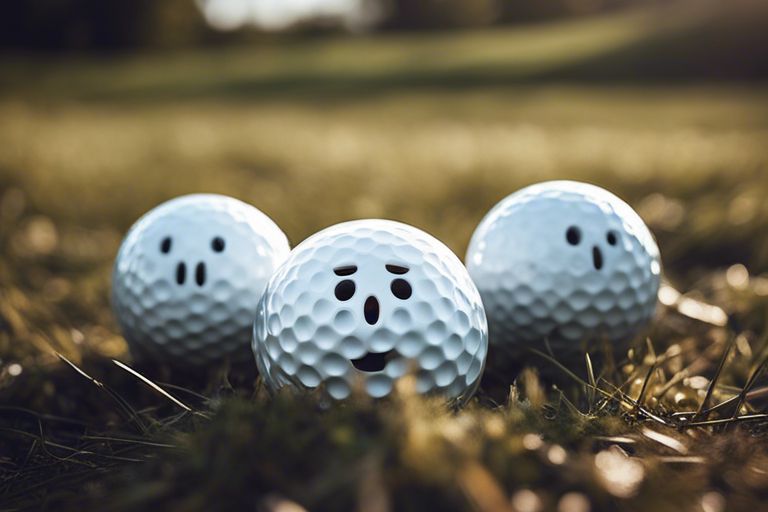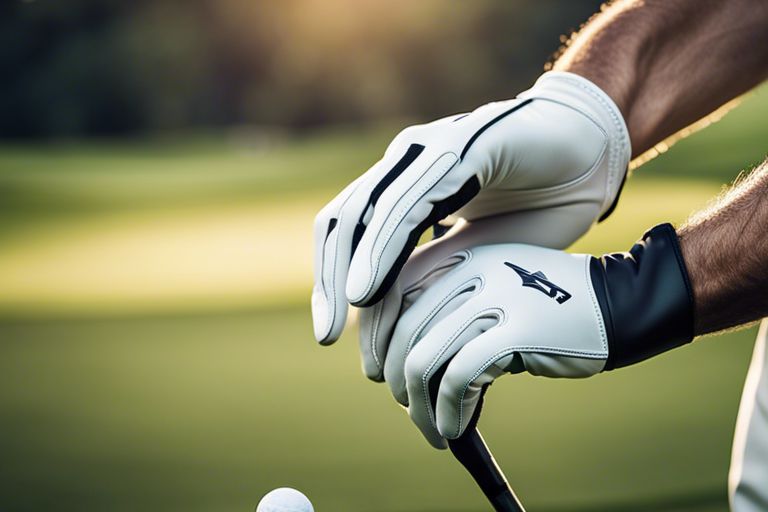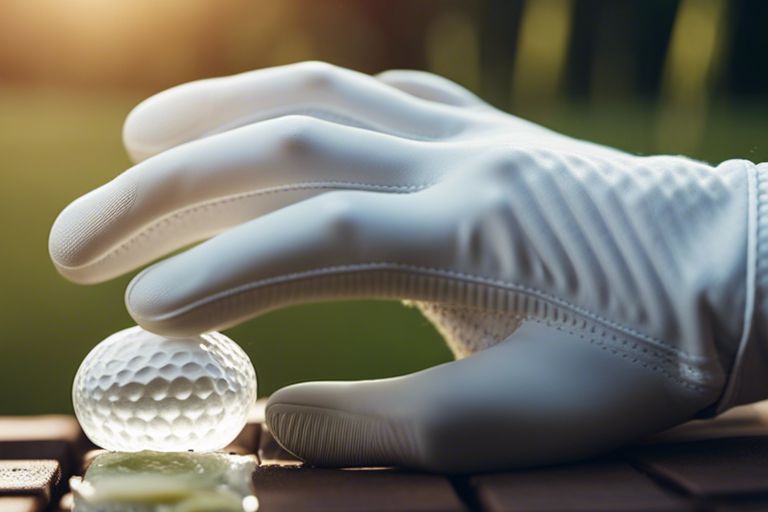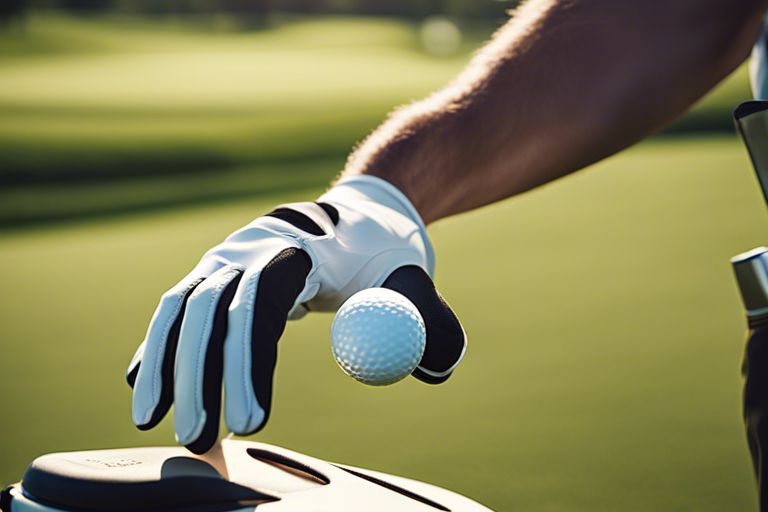It’s a question many golfers ponder: do golf balls go bad? Whether you’re a seasoned player or new to the game, understanding the lifespan of your golf balls can impact your game. In this brief guide, we’ll explore the factors that can affect the performance and durability of your golf balls over time. So, let’s dive in and find out if your golf balls are still up to par!

Key Takeaways:
- Golf balls can deteriorate over time: Exposure to elements like water, sun, and dirt can affect the performance of golf balls.
- Storage is key: Properly storing golf balls in a cool, dry place can help extend their lifespan.
- Regularly inspect your golf balls: Check for any signs of damage, such as cracks or discoloration, which may indicate that the ball has gone bad.

The Shelf Life of Golf Balls
A golf ball may seem like a simple piece of equipment, but it can be affected by various factors that determine its shelf life. Whether it’s the manufacturer’s guidelines or the storage conditions, understanding how to care for your golf balls can help maintain their performance on the course.
Manufacturer’s Guidelines
Any golf ball you purchase will come with a recommendation from the manufacturer on how long it can be used effectively. While there isn’t a set expiration date for golf balls, manufacturers often suggest that after a certain period, the ball’s performance may start to deteriorate. It’s vital to consider these guidelines to ensure you’re playing with golf balls that still provide optimal performance.
Storage Conditions Affecting Longevity
Balls stored in extreme conditions, such as high temperatures or humidity, can experience a shorter shelf life. Temperature fluctuations can also impact the core materials of the ball, affecting its compression and overall performance. To prolong the lifespan of your golf balls, it’s crucial to store them in a cool, dry place away from direct sunlight and moisture.
Signs of Deterioration
Clearly, golf balls are not meant to last forever. Over time, they can deteriorate due to various factors. It’s imperative to know the signs of deterioration so you can replace your golf balls when necessary.
Cracks and Cuts
Cuts on your golf ball can significantly affect its performance on the course. If you notice any visible cracks or cuts on the surface of your golf ball, it’s a clear sign that it has deteriorated. These damages can impact the aerodynamics of the ball during flight and alter its spin and distance control.
Discoloration and Staining
Staining and discoloration on a golf ball can be indicators of deterioration. Exposure to UV rays, chemicals on the course, and even dirt can cause your golf ball to stain or change color over time. While minor discoloration may not affect performance, significant staining can alter the ball’s surface texture and impact its flight characteristics.
Understanding the types of stains on your golf ball can help you determine if it has deteriorated beyond use. Persistent discoloration that doesn’t come off with cleaning may signify that it’s time to replace the ball.
Loss of Shine and Luster
Loss of shine and luster on a golf ball is another sign of deterioration. If your golf balls appear dull and lack the shiny finish they had when new, it could indicate that the cover of the ball is wearing down. This can affect the ball’s ability to repel water and debris, potentially impacting its performance on the course.
A regular inspection of your golf balls for loss of shine and luster can help you identify when it’s time to retire them and introduce a fresh set into your game.

Factors Contributing to Degradation
Environmental Exposure
For your golf balls, environmental exposure can play a significant role in their degradation. Factors such as heat, humidity, and sunlight can all contribute to the deterioration of your golf balls over time. Storing your golf balls in extreme temperatures or exposing them to prolonged sunlight can affect their performance on the course. It’s necessary to store your golf balls in a cool, dry place to help maintain their quality and feel.
Usage and Handling
Any rough handling or excessive use of your golf balls can also lead to their degradation. Constantly hitting your golf balls against hard surfaces like trees, rocks, or cart paths can cause damage to the cover, resulting in a loss of performance. Make sure to inspect your golf balls regularly for any signs of damage and replace them when necessary to ensure optimal performance on the course.
The frequency at which you use your golf balls also plays a role in their deterioration. The more you play with a particular set of golf balls, the more wear and tear they will experience. Rotating your golf balls during rounds can help distribute the impact evenly, prolonging their lifespan.
Cleaning and Maintenance
An necessary aspect of preserving the quality of your golf balls is proper cleaning and maintenance. Regularly cleaning your golf balls with warm, soapy water can help remove dirt, grass, and other debris that can affect their performance. Additionally, inspecting your golf balls for any cuts or gouges and replacing them as needed can ensure optimal playability.
Another tip for maintaining the lifespan of your golf balls is to avoid using abrasive cleaning tools or harsh chemicals that can damage the cover. Instead, opt for gentle cleaning techniques to keep your golf balls in top condition for longer.
The Impact of Age on Performance
Not all golf balls are made to last forever. As golf balls age, their performance can be affected in various ways, impacting your game on the course. Here’s how age can influence the performance of your golf balls.
Distance and Accuracy
Any golfer knows that distance and accuracy are key factors in determining your success on the course. With older golf balls, you may notice a decrease in both distance and accuracy. As balls age, the materials they are made of can become harder and less responsive, resulting in less distance off the tee and reduced accuracy on approach shots.
Spin and Control
Distance control and spin are crucial aspects of a golfer’s game, especially when it comes to shots around the green. As your golf balls age, you may experience a lack of spin and control, making it more challenging to stop the ball where you want it to on the green. This can lead to longer putts and a higher likelihood of three-putting.
Understanding how the age of your golf balls can impact their spin and control can help you make more informed decisions on the course. By using newer golf balls that maintain their spin and control properties, you can improve your chances of executing precise shots and lowering your scores.
Overall Playability
Spin plays a significant role in the overall playability of a golf ball. Older golf balls tend to lose their spin faster, affecting your ability to shape shots and hold greens. When dicking out golf balls for your game, consider the age of the ball and how it could impact your playability on the course. Opting for fresher balls can help you maintain the spin you need to execute a variety of shots with precision.
Accuracy is key in golf, and the playability of your golf balls directly impacts your ability to hit your target. By understanding how age affects the accuracy of your shots, you can make more strategic decisions on the course and choose golf balls that help you maintain the accuracy you need to succeed.
Can You Revive Old Golf Balls?
Many golfers wonder if there are ways to bring old, worn-out golf balls back to life. While golf balls do degrade over time and with use, there are some methods you can try to rejuvenate them and extend their lifespan.
Cleaning and Refurbishing
To revive old golf balls, start by cleaning them thoroughly using warm, soapy water. This can help remove dirt and debris that may be affecting the ball’s performance. You can also use a ball washer or even a gentle scrub with a brush to get rid of stubborn stains. To refurbish the balls, you can polish them with a ball polisher or even apply a fresh coat of clear nail polish to help restore their shine.
Repairing Cracks and Cuts
To revive golf balls with cracks or cuts, you can use a repair kit specifically designed for golf balls. These kits typically include a bonding agent that can help seal the damaged areas, extending the life of the ball. By following the instructions carefully, you may be able to salvage balls that would otherwise be deemed unusable.
Repairing cracks and cuts in golf balls can be a cost-effective way to make the most out of your old balls. While the performance of the balls may not be as good as new, repairing them can still be beneficial for casual games or practice sessions.
Limitations of Revival Methods
Reviving old golf balls has its limitations. While cleaning, refurbishing, and repairing can help extend the lifespan of the balls, they may not completely restore them to their original condition. Over time, the materials in the golf ball break down, affecting their performance, spin, and overall durability. It’s vital to manage your expectations when trying to revive old golf balls and understand that they may not perform as well as brand new ones.
Understanding the limitations of revival methods can help you make informed decisions about when it’s time to retire your old golf balls and invest in a new set. Remember that while revival methods can offer temporary solutions, nothing beats the performance and consistency of fresh, high-quality golf balls.
Best Practices for Extending Golf Ball Life
Proper Storage and Handling
On the golf course or at home, how you store and handle your golf balls can significantly impact their lifespan. Keep your golf balls in a cool, dry place away from direct sunlight and moisture. Avoid storing them in extreme temperatures or places susceptible to high humidity, which can degrade the materials and performance of the balls.
Regular Cleaning and Inspection
An necessary part of extending the life of your golf balls is regular cleaning and inspection. After each round of golf, take some time to wash your balls with mild soap and water to remove any dirt or debris. Inspect them for any signs of damage, such as cracks or cuts, which can affect their flight and durability.
Golf balls can pick up dirt, grass, and other debris during play, impacting their aerodynamics and performance. Regular cleaning not only helps maintain the appearance of your balls but also ensures that they continue to perform at their best.
Avoiding Extreme Temperatures
| Practices | Impact |
| Avoid storing golf balls in hot places such as the trunk of your car or direct sunlight. | Extreme heat can cause the core of the golf ball to expand, leading to decreased performance and durability. |
| Avoid exposing golf balls to freezing temperatures for extended periods. | Extreme cold can make the ball’s cover brittle and impact its bounce and feel. |
Proper storage and handling of your golf balls, including avoiding extreme temperatures, can help prolong their lifespan and ensure consistent performance on the course. By following these best practices, you can get the most out of your golf balls and enjoy better results in your game.
Summing up
Ultimately, golf balls do go bad over time due to various factors like exposure to extreme temperatures, moisture, and impacts that can affect their performance. It’s important to inspect your golf balls regularly for signs of damage like cracks, dents, or discoloration, as these can impact the ball’s flight and distance. By taking care of your golf balls and storing them properly, you can ensure they maintain their quality for longer and help improve your game on the course.
FAQ
Q: Do golf balls go bad?
A: Yes, golf balls can go bad over time. Exposure to heat, humidity, and extreme cold can all affect the performance and durability of a golf ball. The cover of the ball can become scuffed, the core can harden, and the ball may lose its ability to gain maximum distance and spin.
Q: How can you tell if a golf ball has gone bad?
A: There are a few signs to look out for to determine if a golf ball has gone bad. If the cover of the ball appears discolored, cracked, or scuffed, it may be time to replace it. Additionally, if you notice a decrease in distance or spin when using a particular golf ball, it may be past its prime.
Q: How long do golf balls typically last?
A: The lifespan of a golf ball can vary depending on how often it is used and stored. On average, a golf ball can last anywhere from one to seven years. It’s recommended to inspect your golf balls regularly for signs of wear and tear to ensure optimal performance on the course.




